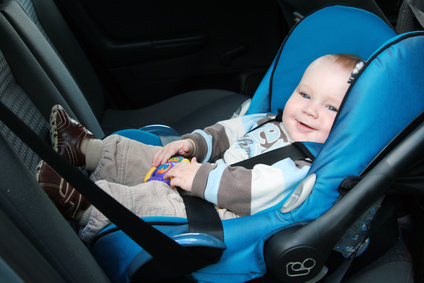
Different laws have been passed by the Florida Government to ensure child safety when travelling by vehicles. As a matter of fact, child safety laws exist in all the 50 states and the District of Columbia. However there are some differences between the child safety laws imposed by the Governments. These laws are generally targeted to the children of a particular age and weight. While some stats demand that cars have seats specially reserved for children up to 8 years of age, others may keep the limit until age 4 or less.
For example, Florida requires car seats for children until they are 3 years old while other states require car seats for children until they are at least 4 years old. The child safety rules of Alaska and Arizona are also a tad different from those of Florida. In Alaska, they demand that there should be car seats for children who are at least one year old and whose weight is near 20 pounds or less. The children should sit in the rear facing seats. Arizona child safety laws do not take the weight of a child into consideration.
Why are child safety seats and seat belts important?
While travelling by a vehicle, it is of utmost importance to provide child safety arrangements. And this can be achieved by the use of child safety seats and seat belts. Child safety seats protect the child from being thrown in case of an auto accident. Seat belts also serve the same purpose thus saving and should be worn by all people.
Florida Child Restraint Requirements
There are the following rules which should be followed for child safety in a vehicle:
- Children who are 3 years old or younger should be secured in child restraint seat which has been federally approved. This is one of the major child safety laws.
- Children who are between the age group of 4 to 5 years old may be secured either in a child restraint seat, which has been federally approved, or by a safety belt. In case the safety belt is too tight or loose, then a booster set may be used and then the child should be correctly positioned.
- A child whose weight lies in the range of 40 to 80 pounds and height is anywhere around 4’9” must ride in the booster seats.
- The driver of the vehicle is responsible for the child safety and it is his/her duty to buckle up the child before any journey.
- Infants should ride facing the rear until and unless they reach a minimum age of 1 year old and weight of 20 pounds. The infant should be placed in a semi upright position with an angle of not more than 45 degrees. An older child who is facing in the forward position should sit in the upright position. This is another very important child safety law which everyone should adhere to.
- One should remember not to place a child (irrespective of age and weight) in the front seat of a car which has an air bag deployment feature. This can cause serious damage to a child in case of an accident. So it is preferable to use the seats at the back for child safety.
Penalties
There are penalties imposed if child safety laws are not followed. These penalties depend upon several factors like age of the child, weight of the child, placement of the child etc. Typical punishments for not adhering to child safety rules include fines of different amounts. Generally a fine of $60 is imposed and along with that 3 points are deducted from the driving record.
